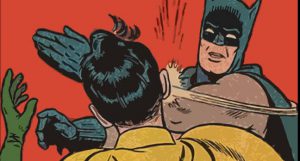
A close up of a miniature model exhibit of the Green Corn Dance, at the American Museum of Natural History. What is the Green Corn Dance?
This is from the wikipedia entry on the Muskogee tradition of the Dance:
the Green Corn festival is called Posketv (Bus-get-uh) which means “to Fast”. This ceremony is celebrated as the new year of the Stomp dance society and takes place on the central ceremonial Square Ground which is an elevated square platform with the flat edges of the square facing the cardinal directions. Arbors are constructed upon the flat edges of the square in which the men sit facing one of the four directions. This is encircled by a ring-mound of earth outside of which are constructed the clan houses. In the center of this is the ceremonial fire, which is referred to by many names including ‘Grandfather’ fire. Ceremonially, this fire is the focus of the songs and prayers of the people and is considered to be a living sacred being who transmits our prayers to Ofvnkv (the One Above) and Hsakvtvmes (the Breathmaker). The whole general ceremony centers on the relighting of this ceremonial fire.
The Posketv is the Creek and Seminole New Year. At this time all offenses are forgiven save for rape and murder which were executable or banishable offenses. Historically nearly everything would be torn down and replaced within the tribal town. In modern tribal towns and Stomp Dance societies only the ceremonial fire, the cook fires and certain other ceremonial objects will be replaced. Everyone usually begins gathering by the weekend prior to the Posketv, working, praying, dancing and fasting off and on until the big day.
The first day of the Posketv is the Ribbon or “Ladies” Dance in which the women of the community perform a purifying dance to prepare the ceremonial ground for the renewal ceremony. Following this there is a family meal and by midnight all the men of the community begin fasting. The men sleep right outside the ceremonial square to guard it from intruders.
The men rise before dawn on the second day and remove the previous year’s fire and clean the ceremonial area from all coals and ash. There are numerous dances and rites that are performed throughout the day as the men continue to fast in the hot southern summer. During this time the women clean out their cook-fires as the central ceremonial fire is relit and nurtured with a special medicine made by the Hillis Hiya. Many Creeks still practice the sapi or ceremonial scratches, a type of bloodletting in the mid afternoon. Then the head woman of each family camp comes to the ceremonial circle where they are handed some hot coals from the newly established ceremonial fire, which they take back to their camp and start their cook fires.
During this time, men who have earned the right to a war-name are named and the Feather Dance is performed. This dance is a blessing of the area and a rite of passage for youths becoming men. It consists of 16 different performances including a display of war-party tactics and virility.
The fasting usually ends by supper-time after the word is given by the women that the food is prepared, at which time the men march in single-file formation down to a body of water, typically a flowing creek or river for a ceremonial dip in the water and private men’s meeting. They then return to the ceremonial square and perform a single Stomp Dance before retiring to their home camps for a feast. During this time, the participants in the medicine rites are not allowed to sleep, as part of their fast. At midnight a Stomp Dance ceremony is held, which includes fasting and continues on through the night. This ceremony usually ends shortly after dawn, part the participants in the previous day’s rites do not sleep till mid-day.
Posketv the “Ceremonial Fast,” commonly referred to as “Green Corn” in English is the central and most festive holiday of the traditional Muskogee people. It represents not only the renewal of the annual cycle, but of the community’s social and spiritual life as a whole. This is symbolically associated with the return of summer and the ripening of the new corn.
Just sayin’.
For more on the Green Corn Dance, see Mornings in Mexico by David Herbert Lawrence. Good luck finding it, however, interweb notwithstanding.
 “That’s right, Robin.”
“That’s right, Robin.”
